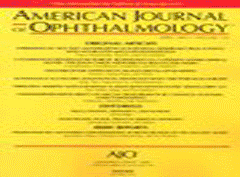METHODS: We retrospectively reviewed the presentation, age at diagnosis, classification, genetic status,treatment, and long-term outcome of 130 patients with unilateral retinoblastoma(1988–2008).
RESULTS: The mean age at presentation was 26 months. Based on retinoblastoma gene (RB1) status in tumors, germ-line status was defined in 92% of patients; 13% had a germ-line mutation. The primary treatment of 106 patients was enucleation. Severe disease at presentation (International Intraocular Retinoblastoma Classification [IIRC] group E) was significantly (p \0.001) associated with adverse histopathological risk factors. Of the 16 patients who underwent eye-conserving therapy, treatment was successful in 9 (IIRC group A, 1; B, 5; C, 3). Two patients with a pertinent family history were diagnosed early and were treated solely with focal therapy. Three patients retained vision of 6/18 or better in the treated eye (median follow-up, 33 months; range, 2-120 months). Seven patients (IIRC group: B, 2; C, 4; D, 1) eventually underwent enucleation. One patient died of metastases following delayed parental consent for enucleation and refusal of prophylactic chemotherapy for high-risk histopathologic features.
CONCLUSIONS: Chemotherapy/focal therapy can save selected eyes, but primary enucleation is preferred for advanced unilateral retinoblastoma. ‘‘Conservative’’ treatment is an option when there is good potential for useful vision without prolonged, costly therapy with potential side effects. Simple enucleation reduces the risk of masking high-risk pathology and promotes
early return to normal life.
RESULTS: The mean age at presentation was 26 months. Based on retinoblastoma gene (RB1) status in tumors, germ-line status was defined in 92% of patients; 13% had a germ-line mutation. The primary treatment of 106 patients was enucleation. Severe disease at presentation (International Intraocular Retinoblastoma Classification [IIRC] group E) was significantly (p \0.001) associated with adverse histopathological risk factors. Of the 16 patients who underwent eye-conserving therapy, treatment was successful in 9 (IIRC group A, 1; B, 5; C, 3). Two patients with a pertinent family history were diagnosed early and were treated solely with focal therapy. Three patients retained vision of 6/18 or better in the treated eye (median follow-up, 33 months; range, 2-120 months). Seven patients (IIRC group: B, 2; C, 4; D, 1) eventually underwent enucleation. One patient died of metastases following delayed parental consent for enucleation and refusal of prophylactic chemotherapy for high-risk histopathologic features.
CONCLUSIONS: Chemotherapy/focal therapy can save selected eyes, but primary enucleation is preferred for advanced unilateral retinoblastoma. ‘‘Conservative’’ treatment is an option when there is good potential for useful vision without prolonged, costly therapy with potential side effects. Simple enucleation reduces the risk of masking high-risk pathology and promotes
early return to normal life.









Post a Comment